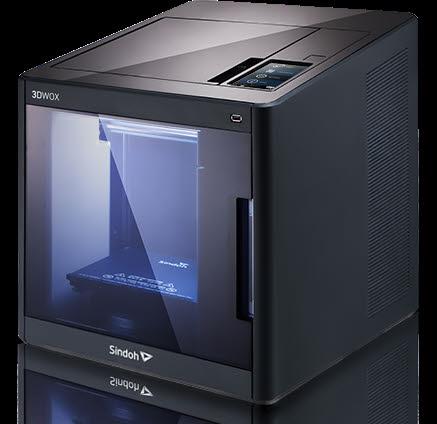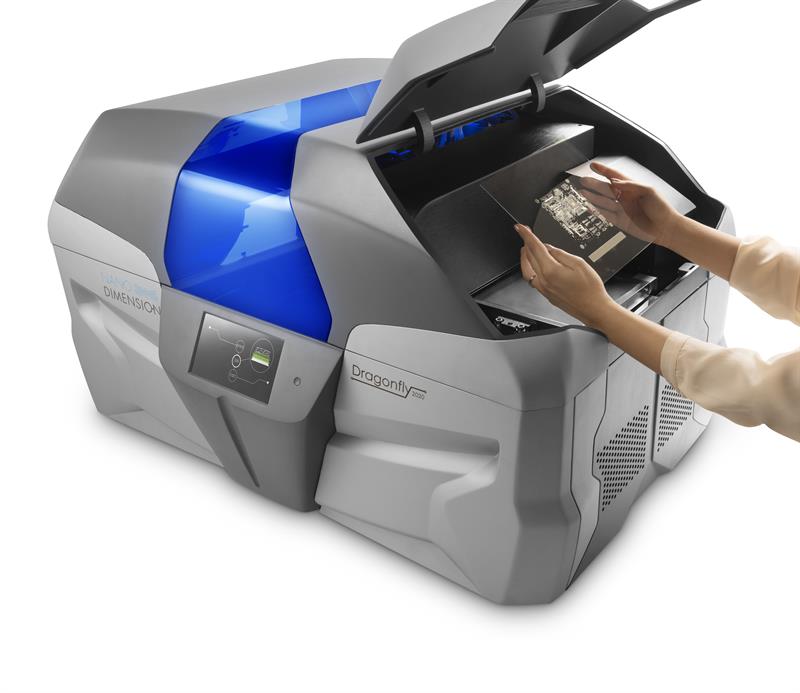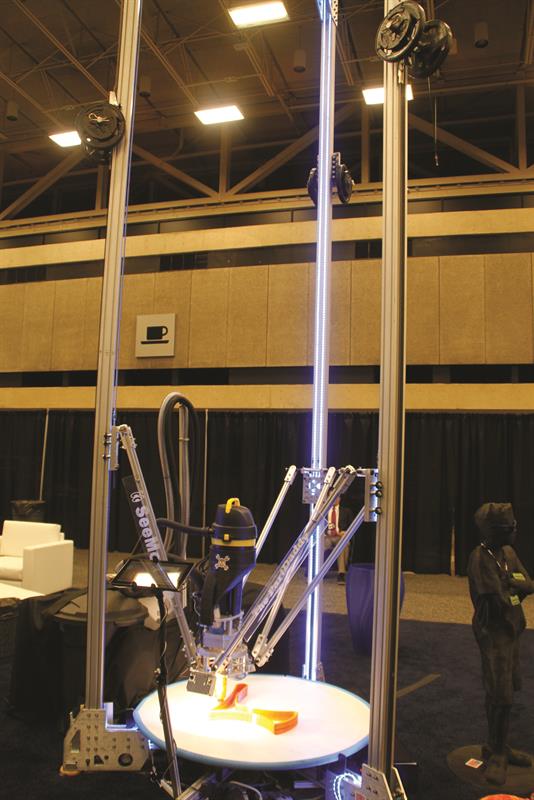The world is changing. The trend of product personalisation – driven largely through software, but also accessories – has empowered consumers and left them wanting more. It has become all about them. Standard is no longer desirable, it has to be unique. The fallout has left many in design and product development scratching their heads as they figure out how to mass produce personalised products. Global firms that produce products in their millions have to find ways to engineer products to feel local.
“People are getting more demanding, and in many markets are beginning to want things that are personalised for them, rather than a standard off the shelf type item,” said Amos Breyfogle, a senior application engineer at 3D print firm Stratasys. “For the automotive industry, generally, they are looking to make their vehicles more adaptable, and focused on specific regions and individuals.”
The automotive market is at the coalface of this changing demand. As an industry, automotive is the epitome of high volume mass-market production. But, while the use of common platforms among different models really took off in the 90s, this was more about the manufacturers consolidating costs and tapping in to different market segments, than offering consumers something unique.
Nevertheless, this is changing. Accessories and options for new cars run in to the hundreds. This level of customisation has seen automotive giant, the Honda Group, actually set up its own subsidiary company to specifically take care of its accessory design and development work.
Honda Access assist the Tokyo based firm to make its cars, motorcycles and other vehicles appeal to local buyers all over the world. Overall, a typical Honda car can have anywhere from two to three hundred accessories that are tweaked and customised.
The accessories used to customise vehicles allow Honda’s global products to be tailored to the needs of local markets and consumers tastes. A simple example is the adjustment of cup size holders for the North American market where imperial, rather than metric sizes, are used.
“We have to take into account a range of considerations such as regional driver preferences, climate considerations and the road surfaces when designing the accessories,” said Hiroshi Takemori, a senior researcher from the product planning department at Honda. “We offer distinct specifications according to a country’s needs and demands.
“Take the CR-V, for example. In the United States, the vehicle is marketed to parents who use it to pick up and drop off their children. But, in China, it is positioned as the ultimate SUV and a status symbol. Since the vehicle body is built to the same standards worldwide, we use the accessories to give the car a little regional flavour.”
From CNC to 3D Printers
Given the vast amount of customisation that is required, Honda recently undertook a project to make the process of design and production more efficient. The company was using CNC machines in its product development for trials and testing, but that process entailed excessive effort and cost.
While 3D printers have been used for 10 years by the Honda Group, the adoption of the process has been limited. Designers have always been excited by the possibilities it offers, but the technology and access to machines has been limited. This, however, has begun to change with the benefits incrementally explored for both the design and implementation of parts.
“There was a lot of buzz about the possibilities of 3D printers,” said Takemori, “We realised that 3D printing would be extremely advantageous for product development... by enabling the realisation of ideas in a very short time.”
Prototyping realism
The recent launch of the Stratasys J750 is offering designers and engineers a step change improvement when it comes to prototyping. The machine moves well beyond being able to replicate the form and fit of a product, and uses a combination of six foundation materials to offer numerous permutations. These ‘recipes’ can be used to achieve a wide range of mechanical, tactile and surface finishing properties as well as virtually any colour imaginable.
“In the prototyping realm, to get the feel of something like leather for example, you normally need leather,” added Breyfogle. “But with the J750 you can print something very similar in the feel, texture and even looks of it. And, you can do that overnight without waiting for tooling or suppliers.
“You can be prototyping cup holders and dashboards with the leather look. So, it really opens doors in terms of versatility. You can see, from a prototyping point of view, this can start to replace many more traditional machines.”
Cost-effective customisation
For Honda Access, it has continued to explore the advantages of 3D printers with its customisation development. It has found the overall design process has improved dramatically. Previously, it would use CNC machines to prototype parts in-house, as well as outsource part of the development operation.
“3D printers allow us to synchronise the development schedule with the vehicle itself and create the accessory parts simultaneously,” said Takemori. “This improves both the quality and speed of the prototype process. The technology has become indispensable for our business.”
Honda said that the CNC machines it did use required full-time operators, while its experience with outsourcing often resulted in delays due to slower communications with service bureaus. These issues have been eliminated since adopting 3D printing with the quality of the design improving too.
It uses the rigid opaque Vero family of materials and paints the printed part with a clear coat in post-processing, resulting in a texture that closely resembles the final product. Designers are now able to examine physical and realistic 3D products during the design process such as headlight enclosures, and quickly modify them. The Objet Eden500V 3D Printer’s larger build size also allows designers to create large parts, such as 14-inch wheels.
Injection moulding parts
For Honda, and others like them, their high volume production rates mean that 3D printed parts are never likely to be used on a car. However, the technology could well move beyond the prototyping stage and help offer more unique production parts.
“When a company decides on a certain cup holder, for example, they then would probably produce upwards of 100,000 of this item,” said Breyfogle. “The reason is because the tooling is very expensive.”
However, as materials improve, the idea of printing injection moulding tools begins to make sense, and further leverages the philosophy of mass-customisation. At present, mould tools can be 3D printed but these are generally used for one-off tests or for short runs, as they soon become warped, worn and unusable.
If a 3D printed mould could be used to produce 5,000 to 10,000 parts, and the mould is a fraction of the cost, then producing even more customisable parts becomes economically viable.
“In some cases people would pay a premium, maybe not for a cup holder but specialised badges or something like that on the vehicle,” added Breyfogle. “This idea of using 3D printing for production tooling really starts to challenge the way that manufacturers produce products, but also offers them some answers about how to create more customisable products, economically.
“It begins to make sense to pay a little bit more per unit cost, but not have to pay for tooling. And it’s more flexible. You can make adjustments and tweak a mould design every 5,000 units, and not worry about the cost of the tooling.”
Click and print
3DWOX includes a closed structure that allows temperature stability, and therefore better quality printing, and it reduces noise impact. A camera with an LED light allows remote monitoring of printing progress and there is a software plug-in that allows direct printing from Solidworks, although not any other CAD packages at the moment. An exporting or reprocessing of files is therefore unnecessary – printing parameters can be set up in the design window and then it is a matter of click and print. 3dprinter.sindoh.com/Product3Dwox |
New dimension in electronics Nano Dimension has developed a new system that adds a further twist to the story of 3D printers. Its DragonFly 2020 due for release later this year is aimed at companies who do a lot of prototyping of products that have electronic components. The system is an inkjet and curing deposition system that is said will print professional quality PCBs. It will build 20 layer boards, and possibly up to 30 layers, depending on the design. It can also print flexible or rigid boards or even a combination of the two. So rather than designing a product around a set rectangular PCBs, it can now be designed to fit into the design space available. The company has developed highly conductive nano-particle silver inks that are an enabling technology within its process. The big advantage is time saving. Rather than taking days or even weeks to turn round an outsourced PCB, this can now be achieved in a matter of hours on the DrangonFly 2020, allowing more opportunities to iterate and innovate.
|
Building bigger models Something of a curiosity to demonstrate a point, the PartDaddy can build models up to 3m high. It was produced by SeeMeCNC to show that its delta format 3D printing platform is scalable. The company’s core products are 3D printer kits, the Rostock Max V2 and the Orion, plus a factory assembled version of the former which can build models of up to 40cm. PartDaddy shows the basic technology is stable enough to get bigger – much bigger. |








 Sindoh is a Korean company that makes many of the leading 2D printers on the market. It has now developed a 3D printer, the 3DWOX, that it is selling under its own label. Available through Amazon (although it is not yet on the UK site), the $1300 unit has a number of nice features including cartridge loading of the filament – a nice draw-through from its 2D printing roots. Rather than having to load spools, then cutting and threading the filament, it is simply a case of slotting a cartridge in and everything else is taken care of automatically.
Sindoh is a Korean company that makes many of the leading 2D printers on the market. It has now developed a 3D printer, the 3DWOX, that it is selling under its own label. Available through Amazon (although it is not yet on the UK site), the $1300 unit has a number of nice features including cartridge loading of the filament – a nice draw-through from its 2D printing roots. Rather than having to load spools, then cutting and threading the filament, it is simply a case of slotting a cartridge in and everything else is taken care of automatically. 




